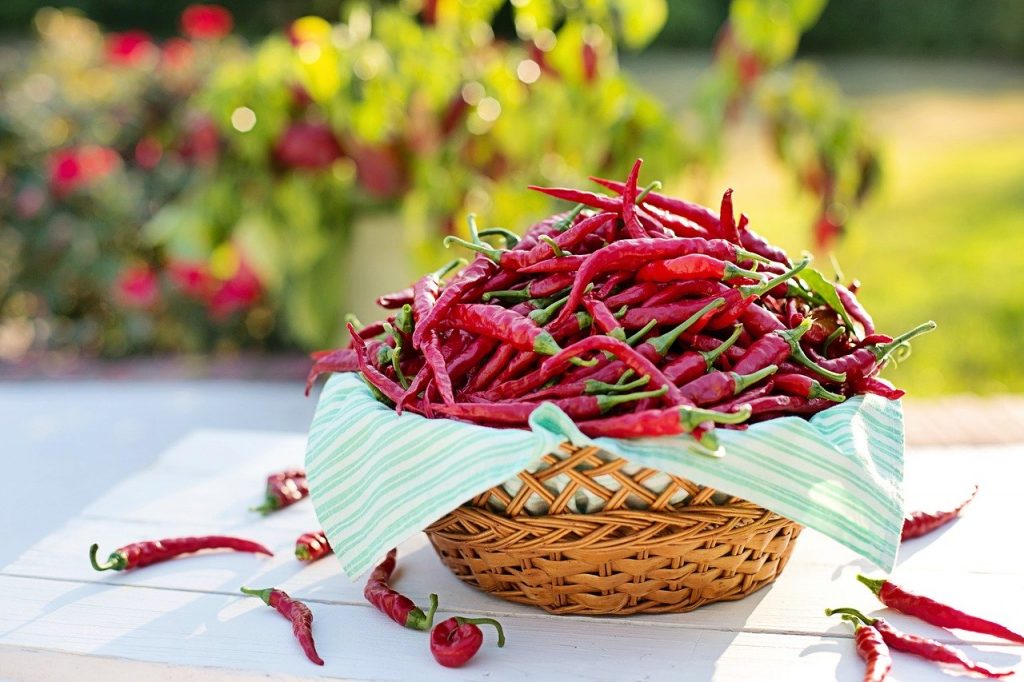
Best Fertilizer For Peppers. What is the best fertilizer for Peppers or Capsicum? It is going to be a challenge to find the right one. Your expectation is to have a bountiful and healthy fruit with proper fertilizer application.
Capsicum or Pepper is a genus of flowering plants in the nightshade family Solanaceae. Capsicum or Pepper is native to America. Peppers are cultivated all over the world and used in many food recipes or for cooking ingredients.
What is the best fertilizer for Peppers?
Diversified types of fertilizers do well for Peppers. To choose the right fertilizer, look for the NPK formulation of the fertilizer.
When you are fertilizing Capsicum, the best fertilizer for Peppers is the one that has the NPK formulation of 5-10-10. This NPK formulation that is best for Peppers means that the fertilizer incorporates and combines half as much Nitrogen as Potassium and Phosphate.
For Peppers, a higher Potassium and Phosphate amount will promote, stimulate, and encourage more Pepper fruit production. Producing enough fruit may still be successful with a low Nitrogen number.
Apply granular fertilizer around the plants and prevent them from touching the plant. When the granule touches the plant, it may burn the plant. Apply 1 1/2 pounds fertilizer per one-hundred square feet.
For a water-soluble fertilizer, do not spray them on tops of the plants. If the efflorescences, branches, fruits or crops, and leaves or foliage get soaked, they will develop diseases. You can spray the fertilizer at the ground or base of the plant.
Fertilizer for Capsicum does well for mulch or compost or manure. Applying mulch or compost around the Capsicum plants with hay or dried grass, chopped up leaves, or chopped up green foliage of plants, or grass clippings is an excellent practice.
The mulch will inhibit the process of the vanishing of moisture from the soil, and help control weeds. You can apply mulch or compost to the Pepper plant at the end of the growing season. Till the mulch into the garden to add nourishment to the soil during the cold winter months.
The best fertilizer for Pepper review
[wptb id="4183" not found ]1. Lilly Miller Morcrop Tomato And Vegetable Food 5-10-10

This fertilizer is a slow-release product for steady, profuse, and delightful growth of Pepper plant as well as other vegetable plants. With its low odor formula that supports and provides the enhancement of fish.
The fertilizer has enough formulation of Nitrogen, Phosphorus, and Potassium to do well on Pepper plant. The product is in the form of granular, and you do not need to mix, so it is easy to use.
It is not intended explicitly for Capsicum, and it is also can be applied for all outdoor plants. The ingredients are integrated with essential minerals and consist of natural ingredients.
The good thing about the Lilly Miller Morcrop Tomato & Vegetable Food is that it will not burn plants. The NPK formulation is 5-10-10, which is perfect for Pepper plant.
2. Miracle-Gro Shake ‘N Feed Tomato, Fruit & Vegetable Plant Food
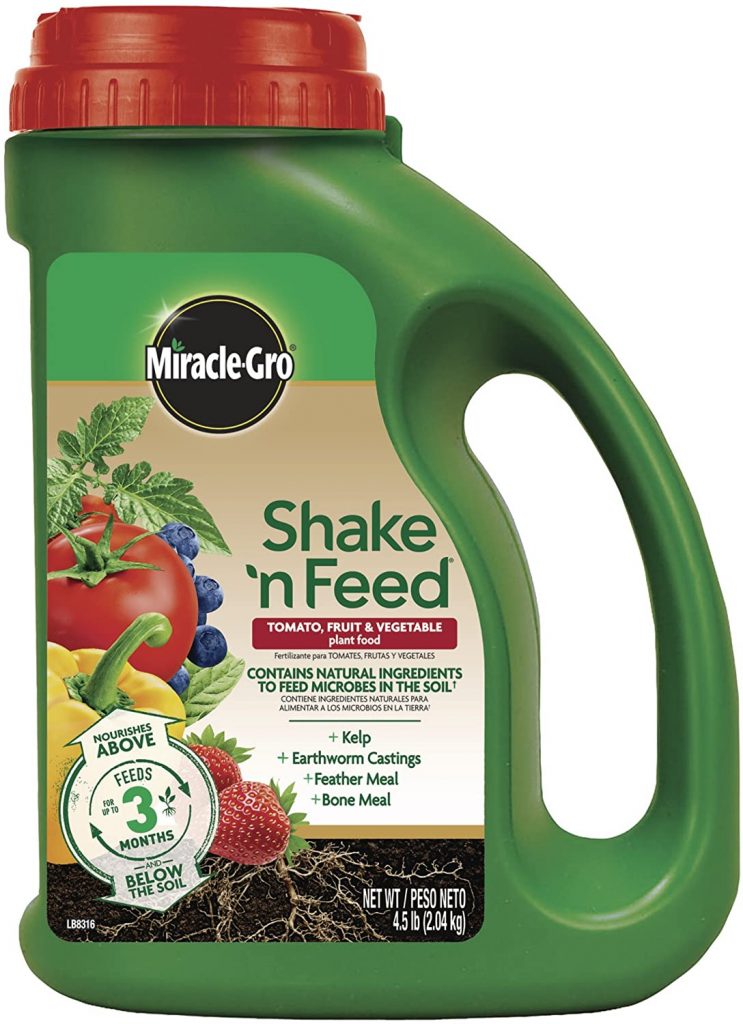
Even though the NPK formulation of this fertilizer is 10-5-15, it is specified systematically with the micronutrients for your Capsicum as well as other veggies. The ingredient consists of feather meal, bone meal, and earthworm castings.
These natural ingredients are feeding the microbes in the soil to produce delightful and bountiful Peppers. The nutrients will be available for plants in the soil, broken down by these microbes.
This formulation consists of Calcium which has many roles for the soil. Calcium helps the metabolic processes of nutrients uptake, help protect the plant from diseases and heat stress, make the wall structure of plants more forceful, help with the enzymatic and hormonal processes.
It is a continuous release fertilizer, and with just one application, it will last for up to ninety days. You can use this formulation in a container plant or in-ground plant or planted garden.
The rate of application is a half measuring cup of fertilizer can be applied to ten square feet of land. Mix the fertilizer into the soil and water well.
3. Dr Earth Organic 5 Tomato, Vegetable & Herb Fertilizer Poly Bag
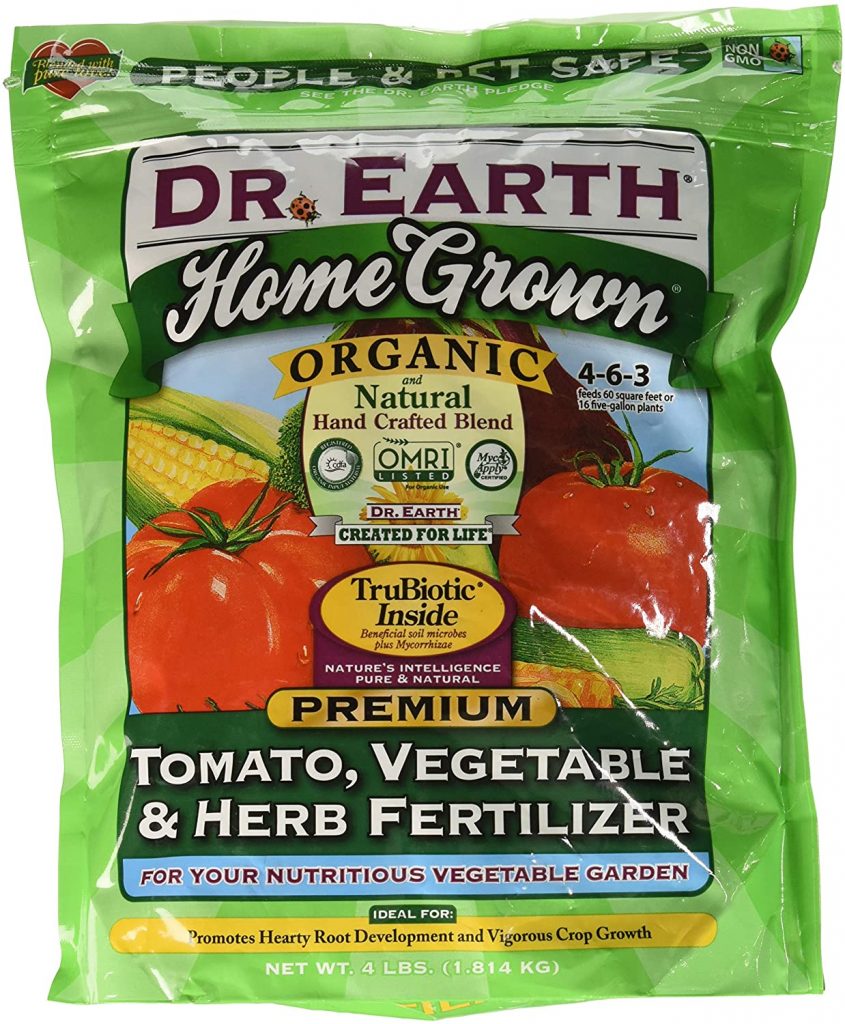
The Dr Earth Home Grown product consists of NPK formulation of 4-6-3 that contains all the source of nourishment that your Capsicum plant demand. Even if you have winter and summer harvest of fruit, this fertilizer product can do great for both.
Other than that, the fertilizer can be used in pot planting or in-ground planting. To apply properly, you can follow the instruction on the back of the bag.
No matter when you are transplanting, seeding, panting or regular fertilizing, you can apply this fertilizer. This fertilizer also has a feed grade element and it is an organic fertilizer.
It consists of fish bones, ocean plants, fish, land plants. After the application, you can believe strongly to make better plant growth from the foliage to the roots.
A single application lasts for numerous months.
4. Organic Plant Magic Plant Food 100% Organic Fertilizer
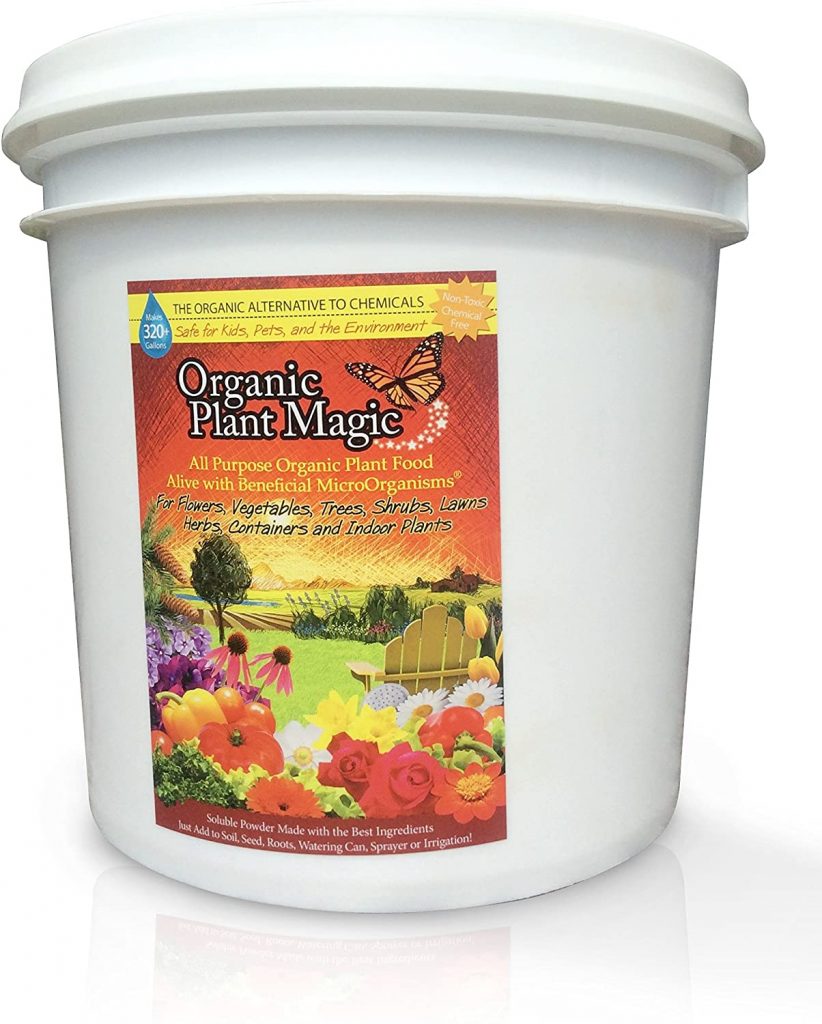
This organic fertilizer melt from solid to liquid immediately in water that causes the application easy and fast. What makes this fertilizer great is that it can be applied to any type of soil, such as sand, loam, and clay.
You do not have to worry about the safety of the application because the fertilizer is safe to use around humans and pets.
The combination consists of a beneficial source of nourishment that immediately begins to make the condition of the soil better to supply and contribute your Pepper plants what they demand.
No matter which period within the structure of growth, this fertilizer can do well to carry a source of nourishment and minerals down to the roots without burning.
To give you peace of mind, this fertilizer product comes with a thirty-day satisfaction guarantee.
5. J R Peters Inc Jacks Classic No.4 20-20-20 All Purpose Fertilizer
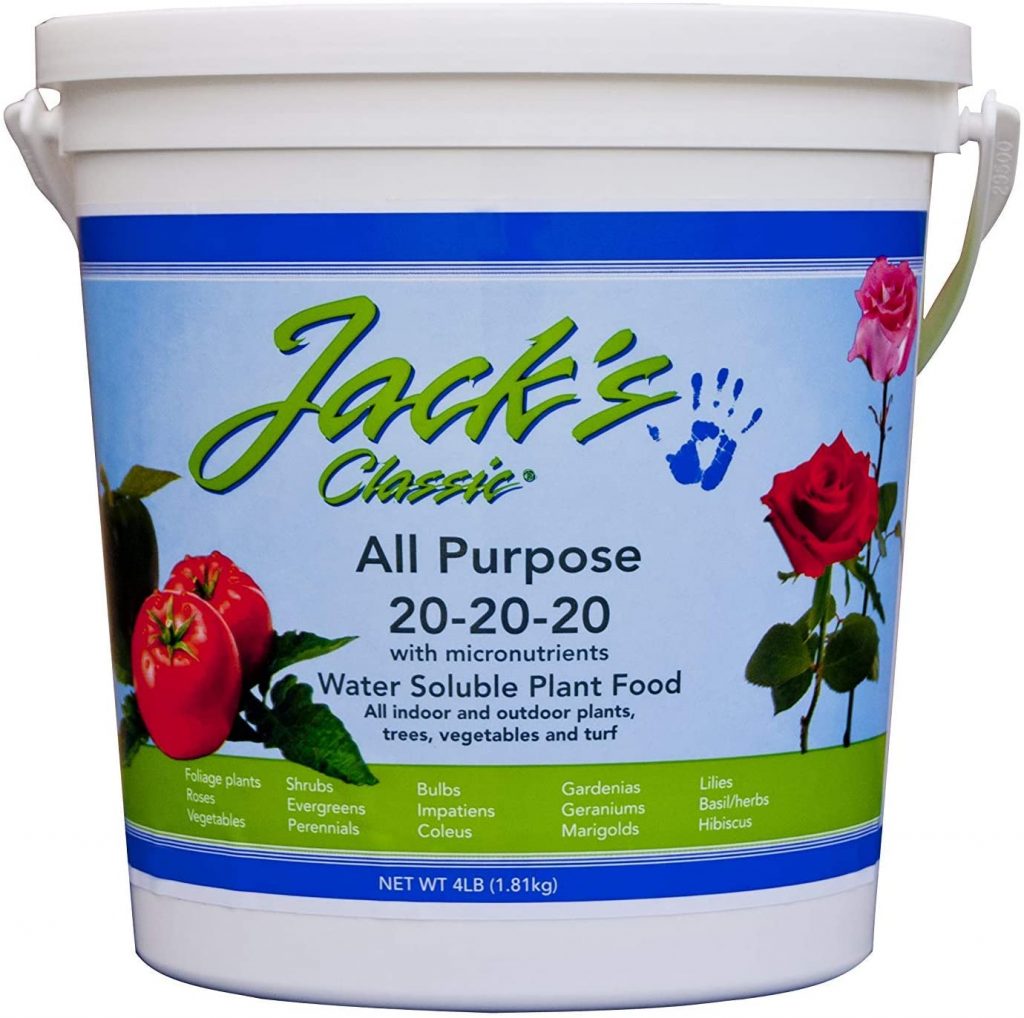
For fast and easy application, you can dissolve this J.R. Peters all-purpose fertilizer with water. It is not formulated explicitly for the Capsicum plant but for any other plant in your garden.
This 20-20-20 NPK formulation fertilizer can be applied for indoor plants as well as outdoor plants, and you can use it to feed through the foliage or roots.
The fertilizer will not burn the roots and consists of micronutrients that stimulate healthy and tenacious roots as well as deep green leaves.
With a single application, it will last for sixteen weeks.
6. FoxFarm Grow Big Liquid Concentrate 6-4-4

This fertilizer is one of the best for the Pepper plant from FoxFarm. It comes as an organic liquid concentrate that can be used for vegetables, herbs, fruits, and flowers.
FoxFarm Grow Big consists of the micro and macronutrients to produce plentiful fruits and to provide heavy vegetation and roots. The pH level is low for effective use every time.
7. Worm Castings Organic Fertilizer, Wiggle Worm Soil Builder
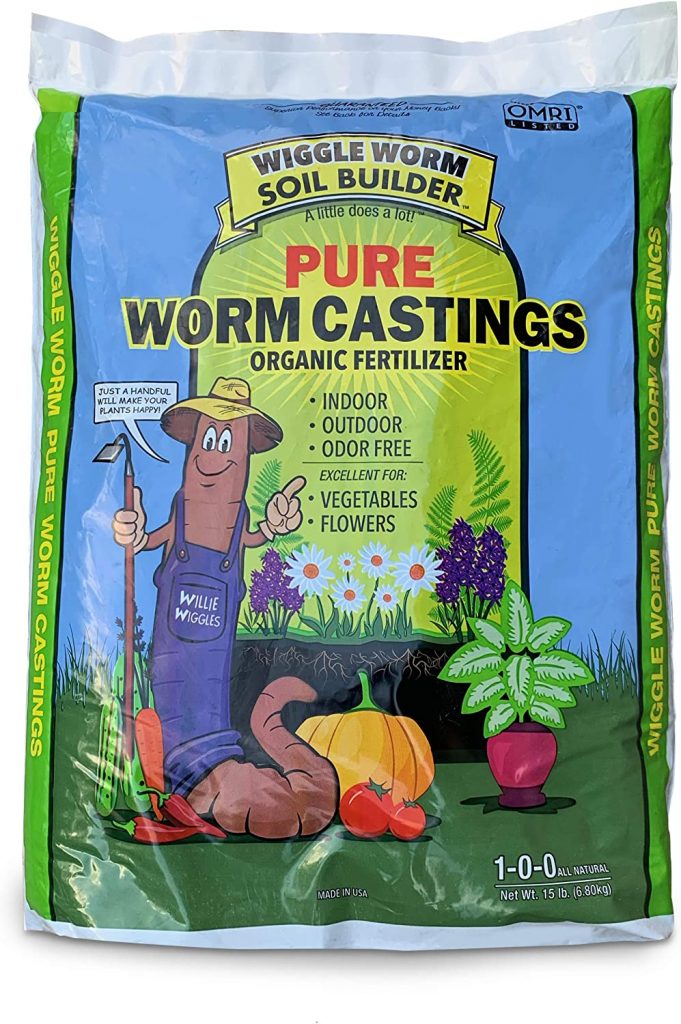
Wiggle Worm Soil Builder is made of a pure earthworm or a segmented and tubular worm of the Phylum Annelida castings. That is why the formulation is odor-free, good for indoor or outdoor applications, and non-toxic.
The earthworm castings carry out sources of nourishment that can be instantly used by the plant and for a longer period of time.
It is safe and has a high amount of microbes and beneficial bacteria to enhance soil structure. The fertilizer helps to let the roots grow rapidly, make the soil well-drained, and aerate them.
8. Miracle-Gro Performance Organics All Purpose Plant Nutrition Granules

This is another organic formula and chemical-free fertilizer product from Miracle-Gro. You can be sure that this fertilizer does well with Capsicum and any other vegetables, flowers, as well as herbs.
All you have to do is to mix the granules to topsoil and water well. A single application can result in six to seven days and lasts for thirty days to forty-five days.
You should follow the instruction carefully to apply proper application for container plants or in-ground planting. Each one measuring cup of granules is good for twenty-five square feet.
9. Osmocote Smart-Release Plant Food Flower & Vegetable
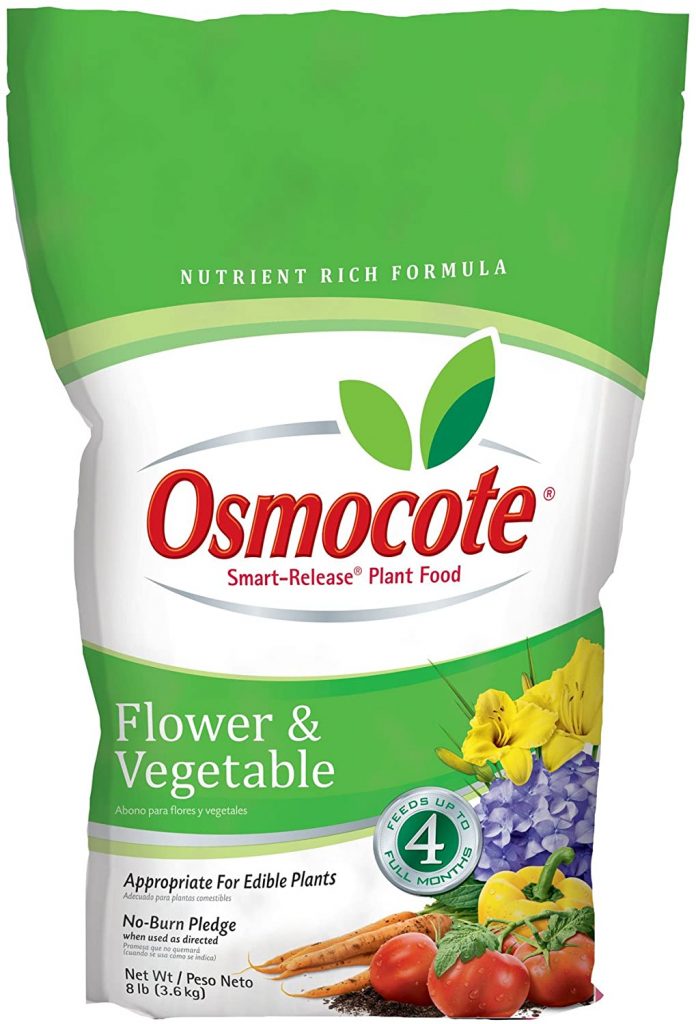
Osmocote produces this fertilizer as vegetables and flower food. It would be perfect for Peppers and can be used for container planting or in-ground plantings.
A single application can last for up to one hundred and twenty days that result in strong roots growth. Every granule consists of important sources of nourishment and the solid form will melt when being mixed with water.
The dissolve solution with nutrients will be released into the soil during the growth stage and warm weather. You can apply one scoop for two gallons of water or one scoop for four square feet.
10. Jobe’s Fast Acting Organics Fertilizer
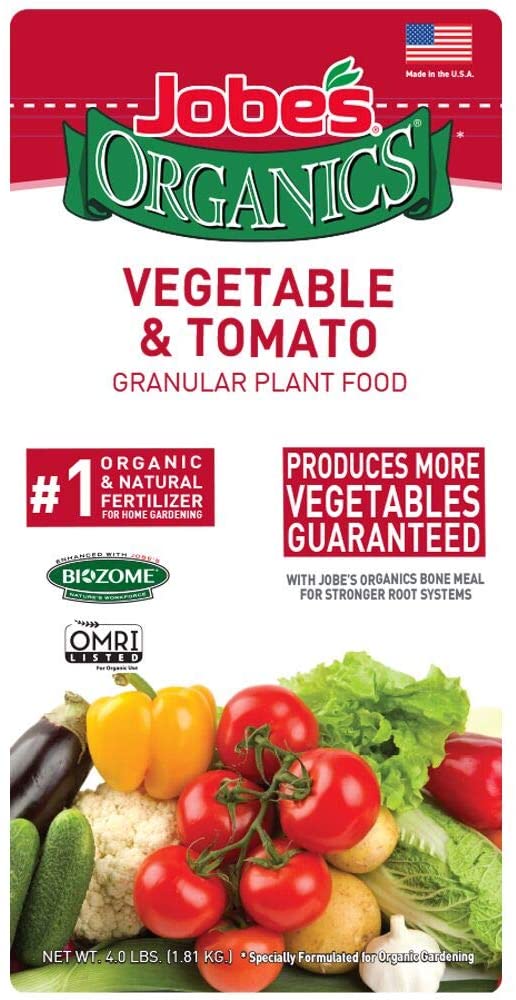
According to the analysis, this fertilizer has an NPK formulation of 2-5-3 and formulated for vegetables like Tomatoes and Peppers. It is not created for short term benefits, has organic ingredients, and does not have harsh chemical use.
Jobe’s fertilizer consists of Biozome that includes Mycorrhizal fungi, Archaea, and healthy bacteria to make the soil better. Archaea promotes plant growth and triggers induced systemic resistance against the necrotrophic bacterium. These bacteria (necrotrophic bacterium) restrict the pathogen by cutting off the nutrient supply to causing death to host plants.
While the Mycorrhizal fungi give access to more water and increase the ability to absorb the source of nourishment. Mycorrhizae fungi give the host plant more protection against various specific pathogens.
Pepper plants will get greater resistance to disease, insects, and drought. The organic granular fertilizer can give faster result for vegetables, Peppers, and Tomatoes for more and more harvest.
When is the best time to fertilize Pepper plants?
The best time to fertilize Pepper plants (according to the University of Michigan) is that the application of Potassium and Phosphorus for Pepper plants can be applied before planting and bed formation. Nitrogen should be applied through the drip system.
For this matter, apply 30 percent of fertilizer before planting. Next, apply the other 45 percent fourteen days after planting.
The final 25 percent spread as a regular fertilizing on a weekly basis and then stop until two weeks before the harvest. This practice will allow the plant to flower and size fruit.
What is the best way to fertilize Pepper plants?
Here is the list of how to fertilize your Pepper plants.
How Often To Fertilize Pepper plants?
The best result for Pepper plants is to fertilize once a month and water them well. Always follow the packaging guidelines. Various brand fertilizers are applied weekly.
One thing to remember is that to not over-fertilize and Pepper plants demand a steady intake of nutrients.
Recommended varieties of Pepper plants
When is the best time to plant Peppers?
The best time to plant Pepper plants from seeds indoors is in the late winter. You can transplant the plant into the garden in the spring, when after the air and soil have become warm.
You must avoid damp and cold soil and the plant will not tolerate frost. The flowers may drop off, leaves may turn to yellow, and the plant grows slow when temperatures drop between 50° to 55°F.
You can take advantage of black plastic mulch, or floating row covers, and raised beds to warm the soil. Once the transplanting begins, set these plants 18 to 24 inches apart in the row.
How to harvest Pepper plants?
You can harvest Pepper fruits at any size. The Green Bell Pepper are commonly harvested when they are mature at three to four inches long, green, and firm.
At its mature stage, fruits break easily from the plant. To prevent any damage to the plant, it is best to cut the fruits.
Hot peppers are harvested at the red-ripe stage. Green fruit might be harvested for some recipes.
Wear rubber or plastic gloves when handling and picking hot peppers.
Frequently ask question
Why do the Pepper plants grow large but not develop fruits?
The reason why Pepper plants do not develop fruits is caused by several weather conditions that can make less fruit set of peppers. The extreme cold can inhibits the fruit set.
Dry wind, hot wave, and warm nights with a temperature above 70°F are another reason that can prevent fruit set. A high level of Nitrogen can also be the cause of no fruit set.
Why the Pepper plant has sunken black areas near the ends of the fruit?
The cause of a blossom-end rot is by drought, under watering, or improper cultivation. To fix this problems, get rid of infected fruits.
You can apply mulching and irrigation systems to prevent blossom-end rot.
How much sun does a Pepper plant require?
Plant Pepper plants eighteen to twenty-four inches apart in a good drain location. Capsicum plants require at least six to eight hours of sunlight everyday day. Blend organic matter or compost into the soil. Water well after planting, and next water regularly all season.
How long do Pepper plants take to grow?
Most hot pepper plants will reach its mature stage in one hundred fifty days. While sweet peppers established between sixty to ninety days.
Do Pepper plants need support?
Pepper plants require support since they will be holding numerous fruit. These Capsicum plants are susceptible to blowing over in thunderstorms, and high winds.